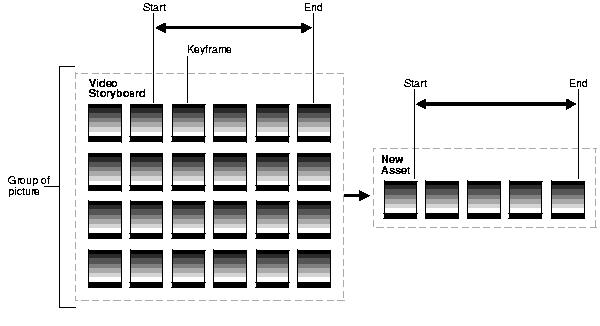Release 3 (8.1.7)
Part Number A86030-01
Library |
Solution Area |
Contents |
Index |
| Oracle8i Application Developer's Guide - XML Release 3 (8.1.7) Part Number A86030-01 |
|
Building n-Tier Architectures for Media-Rich Management using XML: ArtesiaTech, 12 of 13
The task of aggregating non-streaming, self-contained content types, such as static text or images, has been straightforwardly understood for many years. Page layout programs and modern word processors capable of rendering compound documents are abundant, but streaming media types employed in the broadcasting of audio and video have an additional set of challenges. Integrating sets of independent multimedia objects into a synchronized rich media presentation requires the ability to specify temporal (i.e. time based) behavior and layout of the presentation as well as the capacity to connect aperients within media objects.
SMIL, the (Synchronized Multimedia Integration Language), is an application of XML designed to meet the specific challenges of binding multimedia objects (audio, video, still images) as a unified and synchronized rich media presentation.
Employing SMIL, the timing of media objects can be coordinated for rendering, and as each content object is identified by a URL, the rich media components of a presentation can be streamed from numerous sources.
Figure 16-3 shows how SMIL can be used to implement a play list for storyboarding video clips permitting users to select numerous video segments, adjust the in and out points thereof, and then rendering them in a seamless presentation.
This is accomplished by having the application generate a SMIL file that realizes the sequential playback of selected video clips. The user can thereafter easily refine the presentation until satisfied with the selection, cuts, and sequence of the video, facilitating generation of rough-cut edits from digital videos prior to employing an editing suite to fine-tune frame transitions.

User preferences with respect to visualization aids (such as renderers, viewers and players) employed must also be managed. XML is exceptionally well-suited to enable personalization.
As the volume of information for preferences as such is relatively insignificant, the DOM API can be generally be deployed to efficiently create and query end-user personalization.
As the preferences are encoded in XML, they can be seamless managed and interchanged through out the system irrespective of the underlying persistent storage tier. In so much as XML-based rich-media aggregation standards such as SMIL are employed, user preferences specific as such can easily be embedded with the personalization serialization with very minimal computational overhead.
In the quest for ubiquitous mobility there are a number of standards. Two of these standards of relevance to the Digital Asset Management are described here:
|
|
 Copyright © 1996-2000, Oracle Corporation. All Rights Reserved. |
|